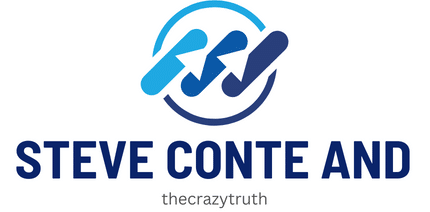How to Create a Daily Enrichment Schedule for a Senior Dog with Limited Mobility?

Aging is a natural phenomenon that transcends across every species. As such, your four-legged friend may no longer be as vibrant as they were in their youthful days. It’s essential to understand that as your dog ages, their mobility and energy levels might decrease. However, this shouldn’t put a damper on their quality of life. Creating a daily enrichment schedule for your senior dog, even if they have limited mobility, can be a great way to keep them happy and active. In this article, we will walk you through step-by-step on how to do this in a manner that is fun, rewarding, and easy-to-implement.
Understanding the Concept of Enrichment for Senior Dogs
Before we delve into this topic, let’s familiarize ourselves with what we mean by enrichment. Essentially, enrichment entails providing your dogs with activities that stimulate their brains and bodies to keep them mentally and physically fit. For senior dogs, especially those with limited mobility, the goal is to keep these activities low-impact yet stimulating.
A lire également : How to Train a Husky to Pull a Sled in Competitive Mushering?
Enrichment activities for senior dogs are not just about keeping them busy; rather, they are about providing them with meaningful experiences that cater to their natural instincts and behaviors. These activities can range from puzzles and games to training sessions. Remember, just because your pet may be slower in their old age, it doesn’t mean they are less capable of mental engagement.
Selecting Suitable Enrichment Toys for Your Senior Dog
Choosing the right toys for your senior dog is central to the enrichment process. Given their limited mobility, the emphasis should be on toys that can stimulate their minds without causing unnecessary strain on their bodies. Puzzle toys, for instance, are excellent for this purpose. These toys are designed to challenge your dog mentally as they try to retrieve the treats or goodies hidden within them.
Avez-vous vu cela : What’s the Best Diet for a Sphynx Cat Prone to Hypertrophic Cardiomyopathy?
Other suitable toys include slow feeders and treat-dispensing toys. These types of toys will not only stimulate your dog’s mind but will make mealtime a more prolonged and engaging experience for them. Remember, the goal is not to exhaust your senior pet but to ensure they are mentally and physically engaged in a manner that is fun and rewarding for them.
Creating a Balanced Diet and Exercise Regime
Moving on, the food your senior dog consumes and the exercise they engage in play a critical role in their overall well-being. To begin with, ensure your dog’s diet is rich in nutrients that support their brain health. Brain-boosting foods include those rich in antioxidants, omega-3 fatty acids, and B-vitamins, among others.
In terms of exercise, a regular regime will greatly aid in maintaining your pet’s health and longevity. However, given your dog’s limited mobility, it is essential to keep exercises low-impact and within their comfort zone. This could be a gentle stroll around the garden or a game of fetch with a soft toy in your living room. The aim is to keep them moving, albeit at a pace that is suitable for them.
Incorporating Training and Mental Games into the Routine
Training sessions and mental games should be an integral part of your senior dog’s enrichment schedule. Training exercises such as obedience drills can be a great way to stimulate your dog’s mind and keep them mentally agile. You could also teach them new tricks or reinforce old ones. Always remember to keep these sessions short and enjoyable, and laden with positive reinforcement.
Mental games, on the other hand, can range from hide-and-seek to treasure hunts. The idea is to make use of your dog’s natural instincts, such as their sense of smell, to engage them in a stimulating activity. Always remember to reward their efforts with treats to make the game more exciting and rewarding for them.
The Importance of Regular Vet Check-ups
Lastly, regular vet check-ups are crucial in ensuring that your senior dog’s health is always in check. The vet will be able to assess your dog’s overall health condition and provide guidance on how best to adjust their enrichment schedule, diet, or exercise regime as necessary. This doesn’t mean you have to visit the vet every day, but regular check-ups should be part of your enrichment plan. Regular vet check-ups will ensure that any health issues are detected and addressed early, helping to prolong your pet’s life and ensure they remain as active and happy as possible.
Remember, your senior dog may not be as spry as they once were, but this doesn’t mean they should be left to live a sedentary life. With the right enrichment schedule, you can ensure that your pet’s twilight years are just as fulfilling and entertaining as their youthful days.
Keeping Your Senior Dog Socially Engaged
Social interaction is crucial to the overall enrichment of your senior dog. A dog’s social needs don’t diminish with age, and even though physical activity might be limited, interaction with other dogs or humans can provide significant mental stimulation.
One way of ensuring your dog remains socially engaged is through play dates with other dogs. If your dog has a furry friend they’ve always gotten along well with, arranging a low-intensity playdate could provide a great source of fun and interaction. However, it’s crucial to ensure that the other dog is calm and won’t overwhelm your older dog with high energy play.
Alternatively, you can also make sure your senior dog is involved in family activities. This can be as simple as having your dog nearby during family dinners, allowing them to be petted and spoken to by family members, or even bringing them along on car rides. Remember, the goal here is to keep your pet feeling loved and included.
Another excellent method of promoting social engagement is through training sessions. These sessions can provide both mental engagement and an opportunity to bond with your pet. You might consider hiring a professional trainer who specializes in working with older dogs, as they have the skills to adapt training methods to the needs of a senior pet.
Conclusion: An Enrichment Schedule Promotes a Healthy and Happy Life for Your Senior Dog
To sum it all up, developing a daily enrichment schedule for your senior dog with limited mobility is vital in ensuring they lead a fulfilling and joyful life in their twilight years. It’s crucial to remember that while your dog’s energy levels and mobility might decrease as they age, their need for mental stimulation, social interaction, and affection does not.
Through an array of enrichment activities such as the use of puzzle toys, maintaining a balanced diet and an exercise regime, incorporating training sessions and mental games, and keeping up with regular vet check-ups, you can cater to your dog’s physical and mental needs. You could also use a snuffle mat for interactive feeding and promoting the mental health of your dog.
Moreover, keeping your dog involved in social activities can greatly improve their emotional well-being. So, whether it’s a playdate with a furry friend, a family game night, or a car ride, every bit of social interaction helps.
Remember, your pet’s golden years can still be a time of exploration and fun. Your senior dog may not be as spry as they once were, but with the right enrichment activities and your unwavering love and care, their twilight years will be nothing short of golden. After all, they’ve spent their lives bringing you joy and companionship; it’s only fitting that their later years are filled with the same.
